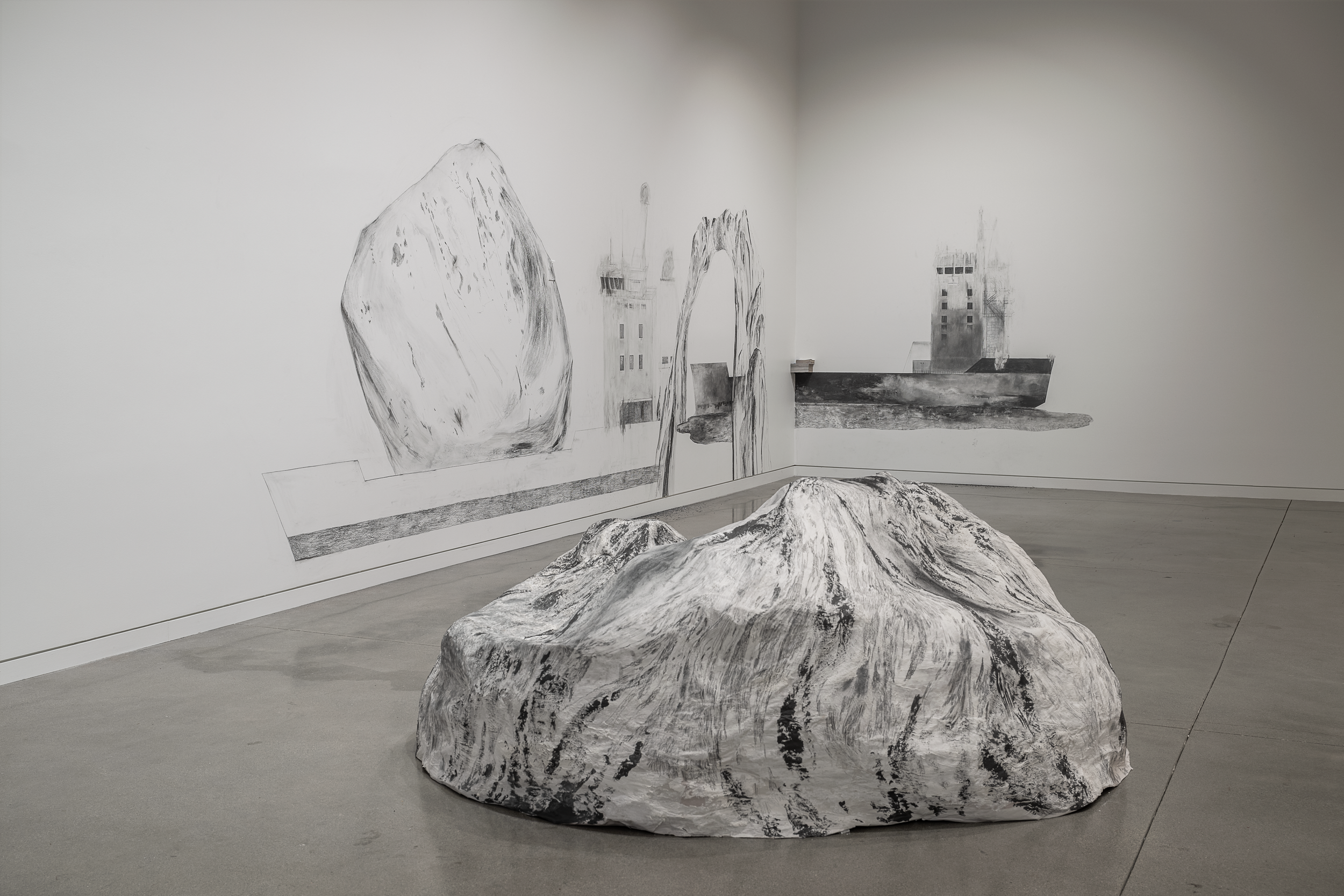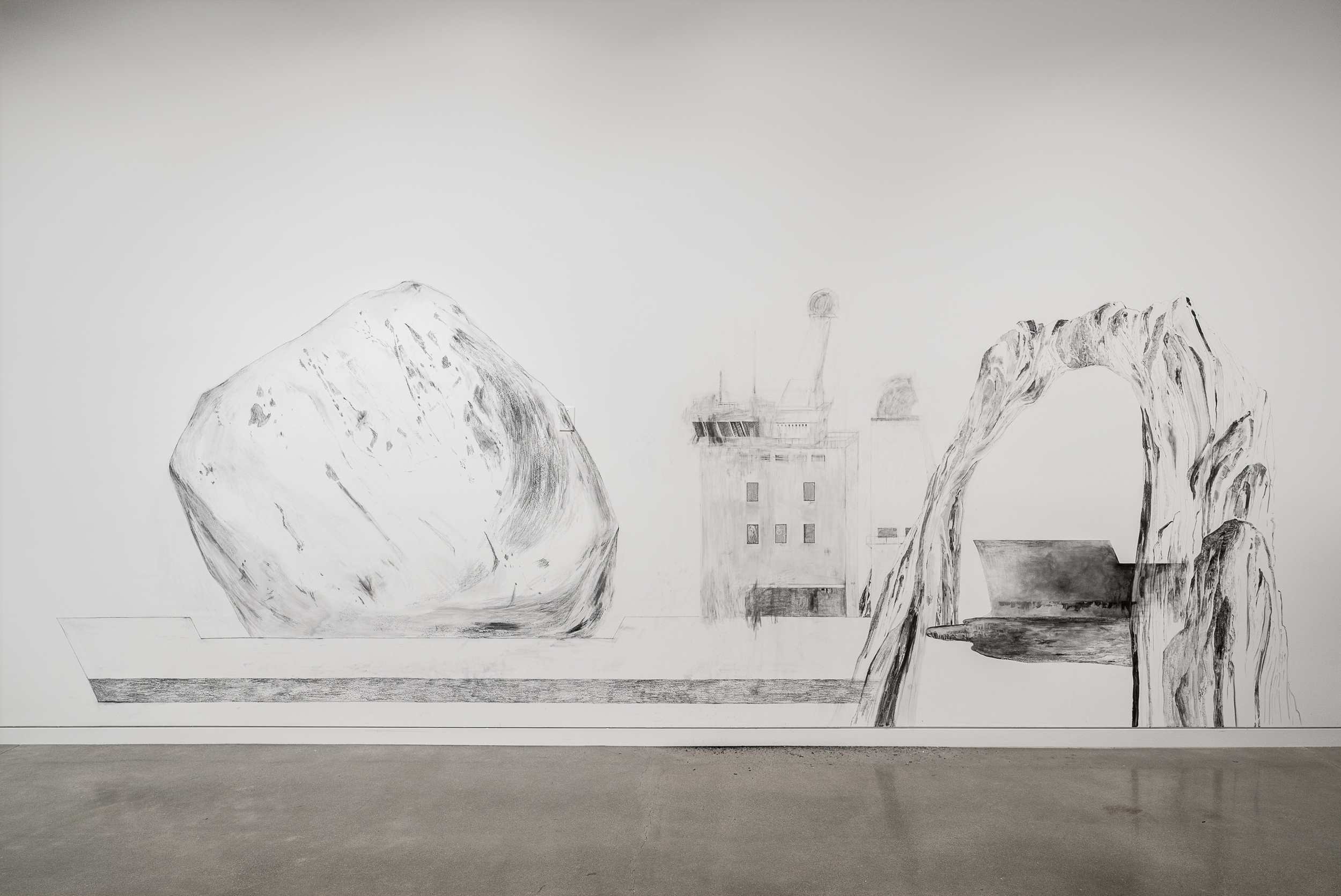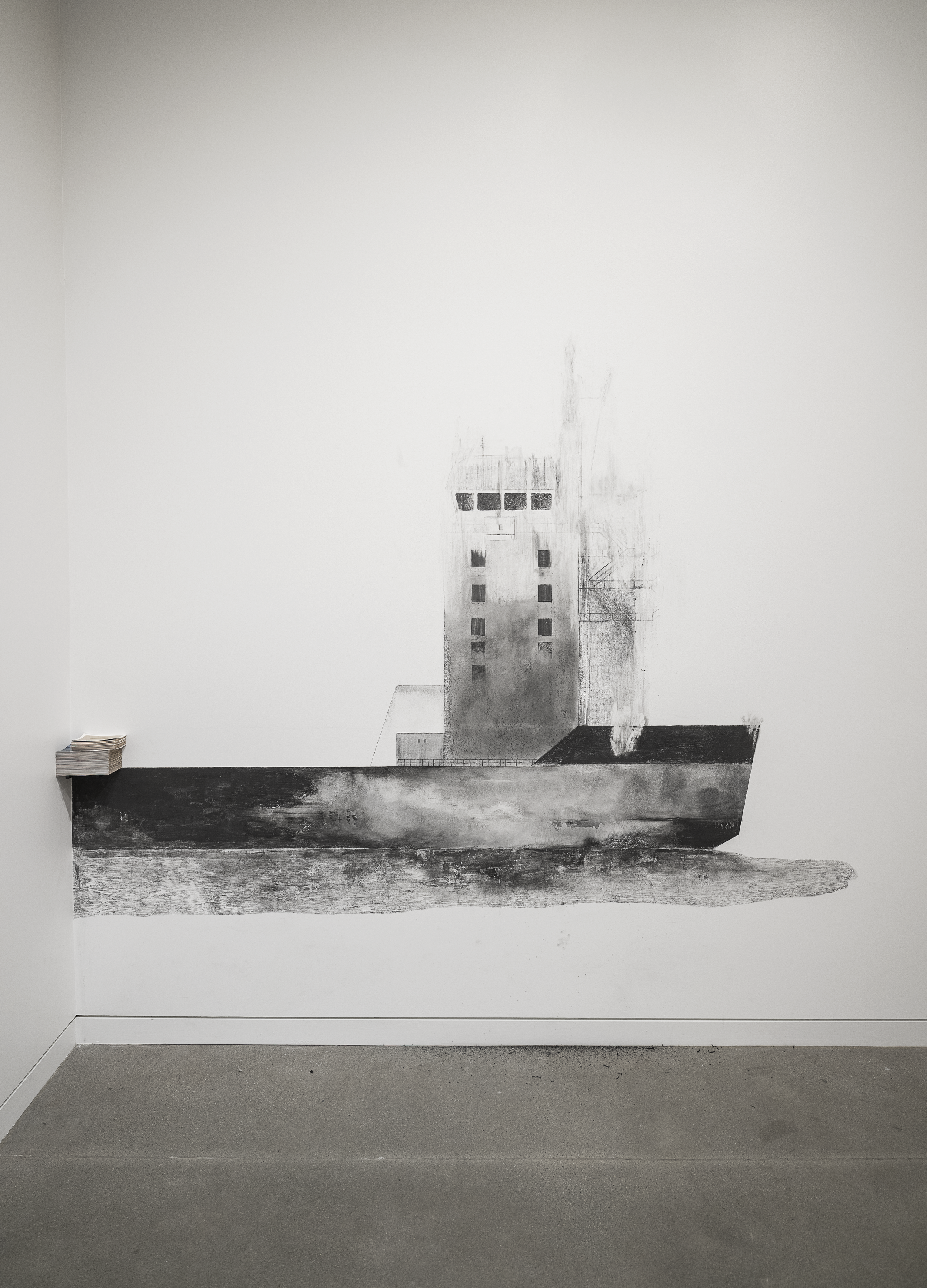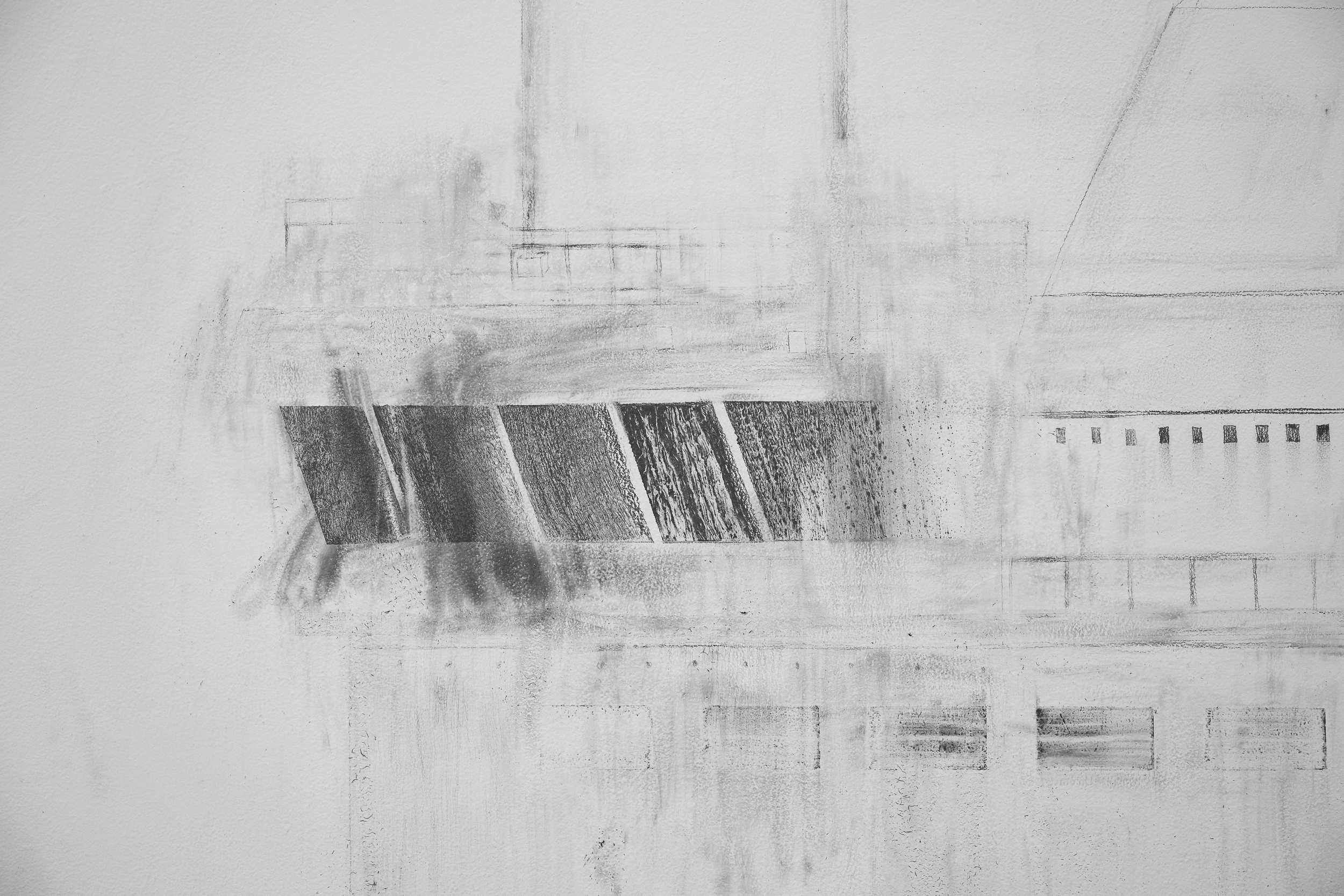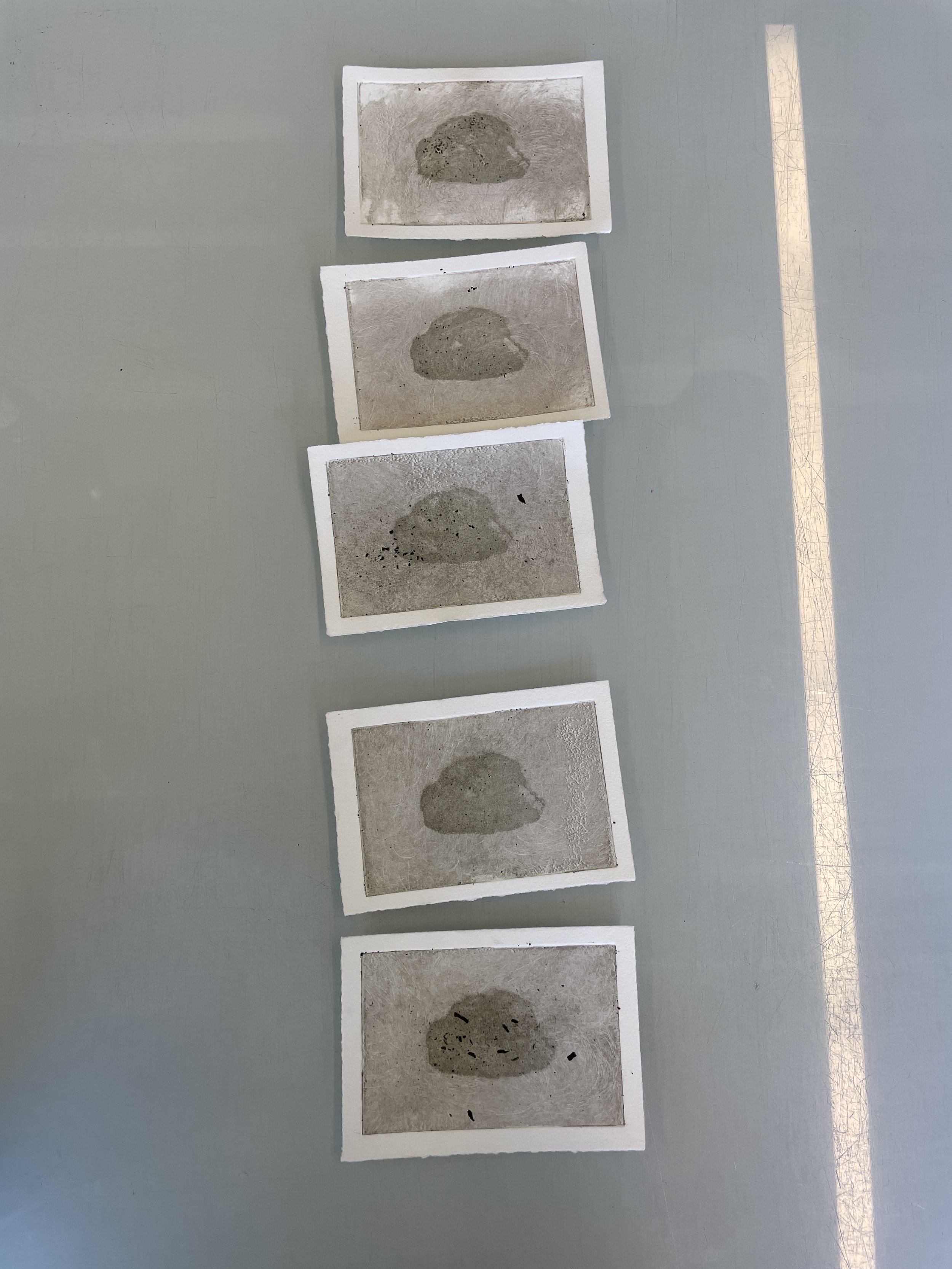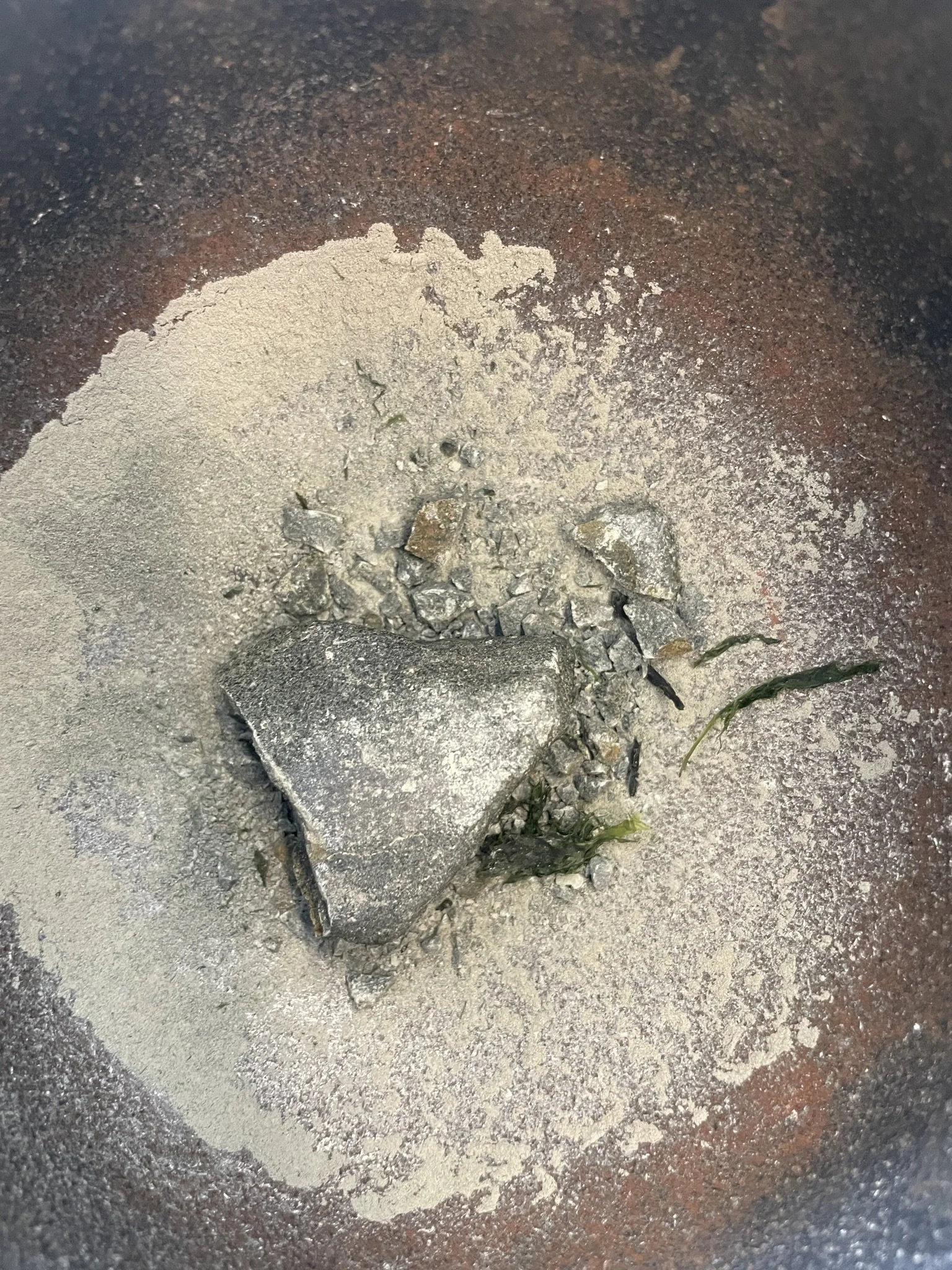a cut of sediment from memory
graphite on wall, graphite on paper-mâché, rock-pigment intaglio print on archival paper and family
photographs, 244 x 640 cm, 61 x 174 x 1 cm, 8.9 cm x 12.7 cm, 10.2 x 15.2 cm
installation view, photo: Michael Love
Revisiting the exact spot of a tide pool from a photograph taken twenty-three years ago and attempting to find the same rock captured in the photo, the graphite drawing, paper sculpture, and rock-pigment prints recollect faint memories from the past. These renderings of the rock aim to question forms of representation through the elusive nature of memory, the interiority of a drawing and a compressed surface that captures a moment. As the rock becomes a singularity that disrupts the representation and triggers a sense of place, it is no longer a mere sediment but a metonym of a slice of time, a textural layer of my memory.
Contemplating the dialectical relationship and encounter between individual, rock, space and place, a continuum is formed: a constellation of temporality where personal and social time collide. Expanding spatiality in drawing and exploring the perception of a landscape through a phenomenological approach, this work constructs a liminal space that entails the potentiality of being and becoming, where memory and place become entangled within light and perception.
loose notes on printmaking –––––
The first print is a faint imprint, light contours of the rock are floating on the surface with seaweed fragments and a greenish grey plate tone. Seeping through the greyish pigment, challenging the daunting whiteness, the haunting imagery on the second print comes back darker and clearer. A continuous unfolding, each print reveals itself after a laborious and repetitive mechanical process. Again and again, the lines appear cleaner and sharper as the rock pigment is further pulverised by the printing press.
There is no doubt that the rock disappeared. Still, it reappears in the pigmented ink, in the plate tone on the print, in the scratches and dents on the plate, again and again, the pictorial space is becoming a rock through the accumulation of layers – with its weight, it carries on in the particles that score the plate and oxidise the pigment on the paper.
The printing process archives the loss and return of the rock.
An intaglio print that archives a loss of the rock.
Printing a photographic image of the rock, with a rock fragment collected from that rock. The copper plate is an open wound that keeps the warmth of touch, an imprinted impression, exposing the negative of the photographic image onto the copper plate, the surface that is ready to be etched is a transfer of reality in memory that has survived after the bite of acid.
The reciprocity of absence and presence, disappearance and reappearance, is manifest in printing with a matter of physicality, weight and depth, producing traces on the surface of a flattened form. Turning solid rock into powder and mixing it to form ink. The rock-pigmented ink then produces traces of traces in each print, again and again, the traces come back with the imagery that echoes on the plate. Every print is a repetition, yet it is singular, for it is the first and the last time.
